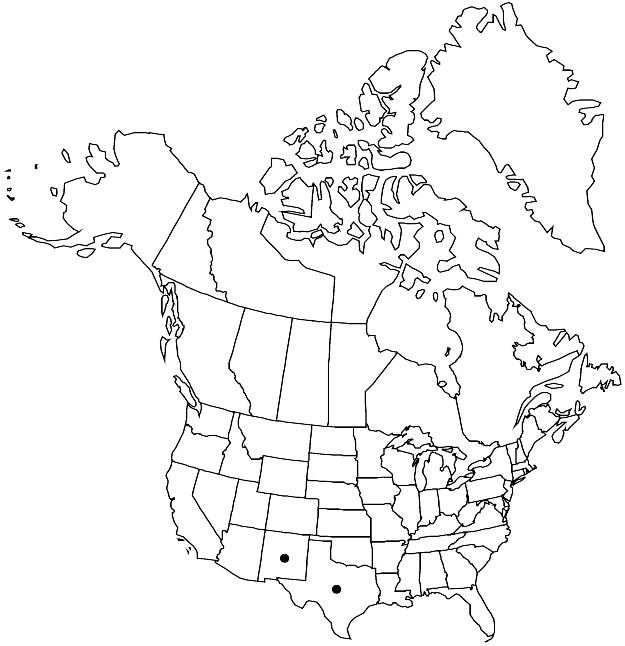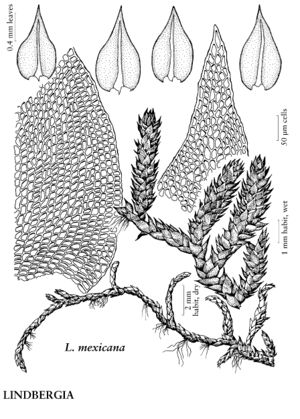Lindbergia mexicana
Rev. Bryol. 37: 51. 1910.
Plants dark green, dull. Stems often curved, subjulaceous when dry. Leaves appressed when dry, wide-spreading when moist, broadly ovate-lanceolate, gradually narrowed to apex, 1 mm; margins entire; apex concolorous; costa ending just below apex, broad; basal laminal cells subquadrate; medial cells oval, 3–7 µm, indistinctly 1-papillose; apical cells elongate, smooth. Specialized asexual reproduction with brood branches absent. Seta 0.8 cm. Capsule 1.5–2 mm. Spores 20–24 µm, smooth.
Phenology: Capsules mature May–Dec.
Habitat: Tree bark, shrubs, rotten wood
Elevation: high elevations (1700-3000 m)
Distribution

N.Mex., Tex., Mexico (Chihuahua, Coahuila, Tamaulipas), Central America (Guatemala).
Discussion
Lindbergia mexicana is included in the genus because of its reduced peristome and leaves widely spreading when moist. Plants of L. mexicana differ from others in the genus in a strict sense in having leaves with less distinctly papillose cells (H. A. Crum and W. R. Buck 1994). Lindbergia mexicana is distinguished from L. brachyptera by branches that are subjulaceous when dry, leaves that are acute to short-acuminate, a broad costa extending nearly to the apex, and indistinctly 1-papillose laminal cells. The basal laminal cells are wider than long, in several rows.
Selected References
None.
